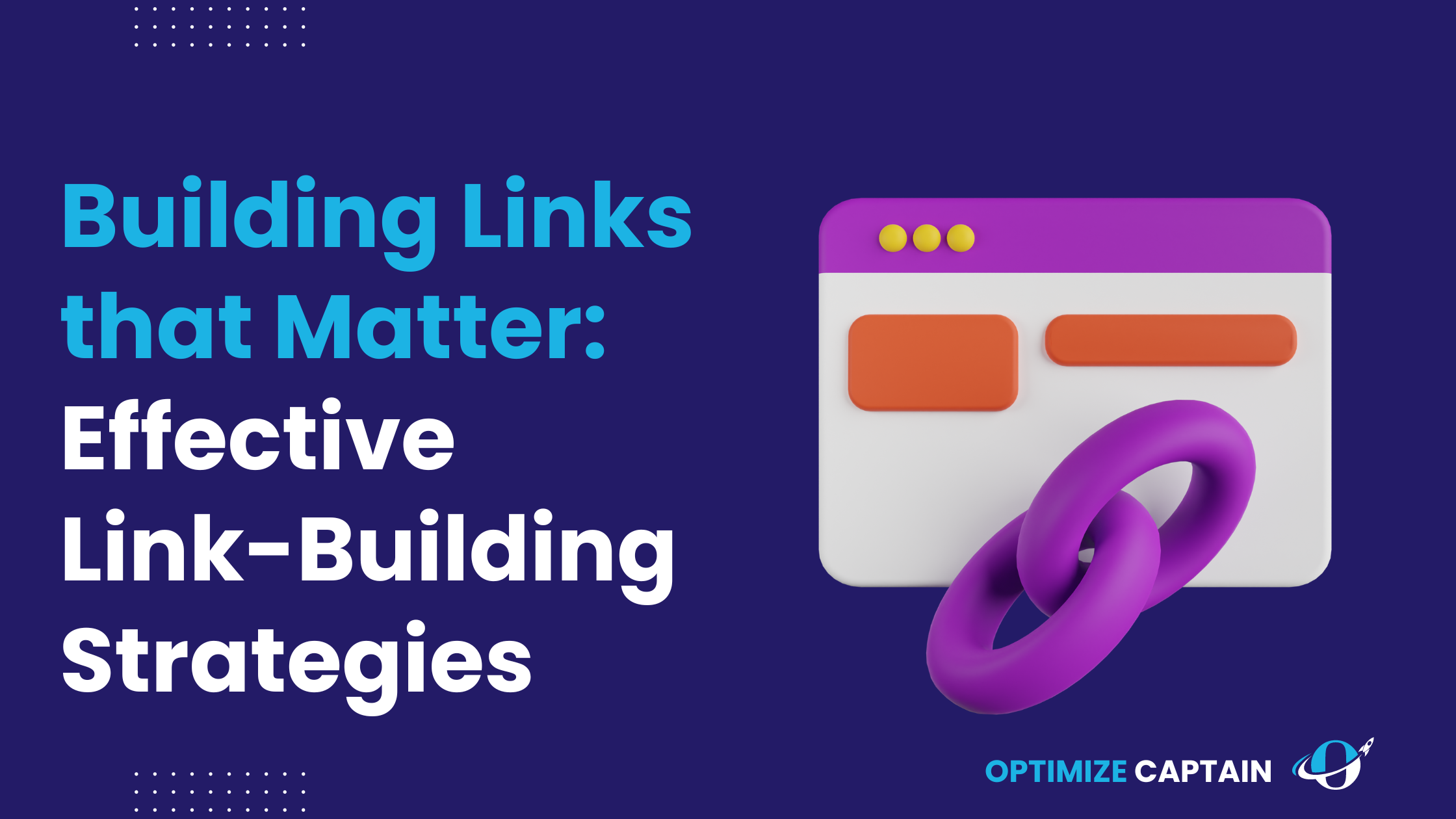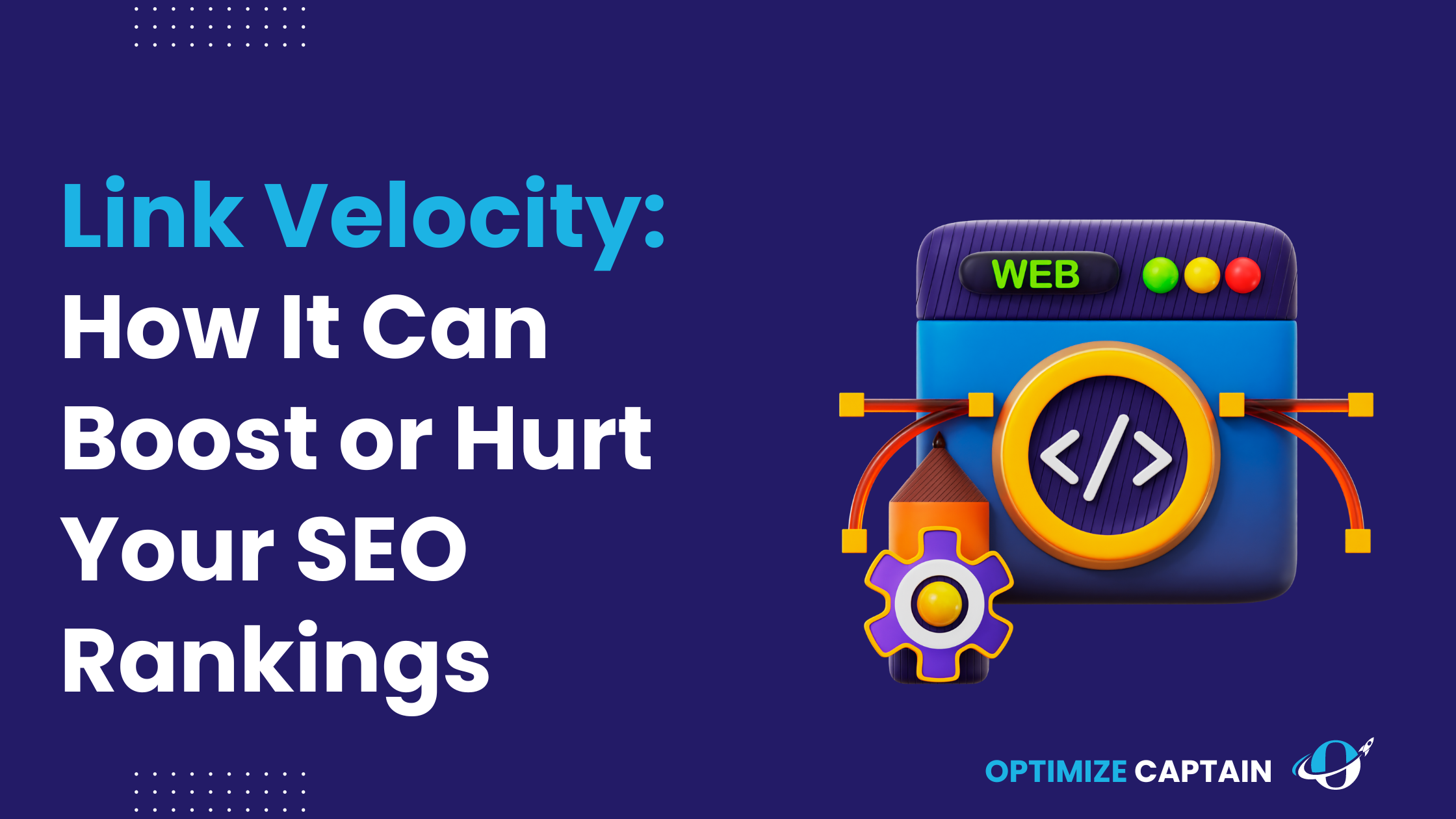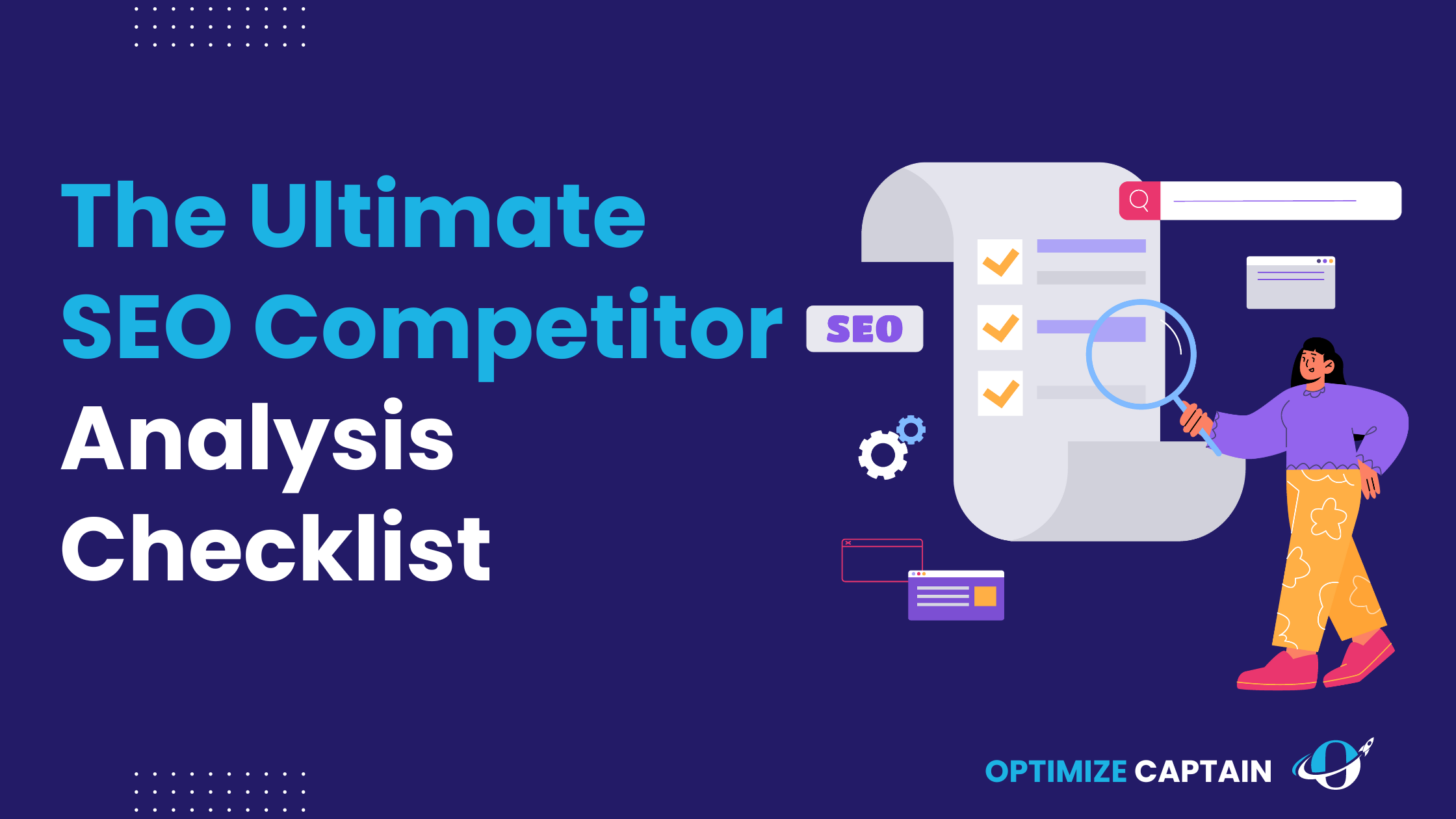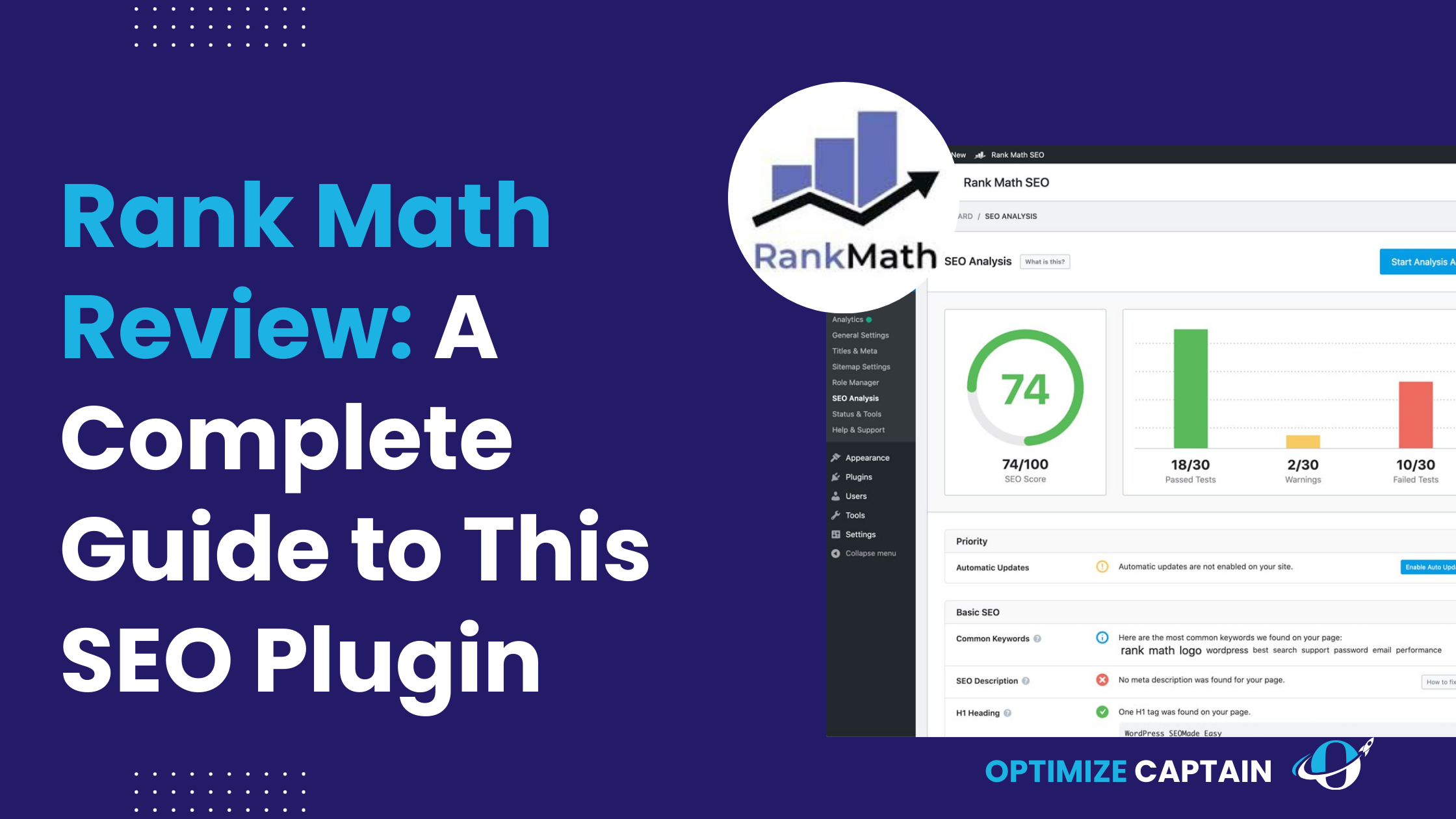Link-building remains one of the most reliable ways to improve your website’s search engine visibility and boost organic traffic. Done correctly, it builds authority, helps you rank higher on Google, and even establishes trust with your audience. But with many link-building hacks, how do you know which strategies are worth your time?
This article will walk you through some of the most effective link-building strategies, share actionable tips, and offer practical examples. Whether you’re new to SEO or have some experience, you’ll find this guide easy to follow and implement.
What is Link-Building?
Link-building is acquiring hyperlinks (commonly referred to as links) from other websites to your own. These links act as a way for users to navigate between different web pages across the internet. From an SEO perspective, these links are like “votes of confidence” that tell search engines your website is valuable and credible, helping it rank higher in search results.
Why is Link- Building Important?
Search engines, particularly Google, consider high-quality backlinks as a major factor in determining the authority and relevance of a website. The more high-quality links a site has, the more it is viewed as trustworthy and authoritative. This, in turn, improves your chances of ranking for keywords related to your industry. Link-building helps drive organic traffic, boosts domain authority, and builds brand visibility. Without backlinks, even well-optimized pages may struggle to rank highly.
Types of Link-Building:
Link building is not a one-size-fits-all process; it involves various methods and strategies. Here are the main types:
- Natural Links: These are the links that websites give to your site without you having to ask for them. They happen organically when someone finds your content valuable and decides to link to it.
- Manual Outreach Links: These links are earned through intentional efforts. You reach out to website owners, influencers, or bloggers and ask them to link to your site.
- Self-Created Links: This includes adding your website to online directories, forums, or commenting on blog posts with a link to your site. These are typically considered the weakest form of link building and should be used cautiously to avoid Google Link building penalties.
What’s Included in a Link-Building Campaign?
A successful link-building campaign involves a mix of strategies. Here’s what’s typically included:
- Content Creation and Promotion: High-quality, engaging content is at the heart of link building. If your content provides value, others will want to link to it.
- Outreach: This involves contacting site owners, bloggers, or influencers and asking them to link to your content. It’s a manual, personalized process.
- Guest Blogging: Writing articles for other websites in exchange for a link back to your own. This is a popular method for earning quality links.
- Broken Link Building: Finding broken links on other websites and offering your content as a replacement.
- Resource Pages: Submitting your site to high-authority resource pages that collect and share valuable information.
The Goal of Link Building:
The ultimate aim of a link-building strategy is to earn high-quality backlinks from reputable websites in your industry. It’s not just about the number of links, but the quality of those links that matters. Links from reputable, high-authority sites have a much bigger impact on your SEO than links from lesser-known sites.
7 Effective Link-Building Strategies
1. Optimize Your Anchor Text
What it is: Anchor text refers to the clickable words in a hyperlink. It’s what users see and click to go from one webpage to another. Google uses this text to understand what the linked page is about. However, over-optimizing anchor text (using too many exact-match keywords) can lead to penalties.
Points to keep in mind:
- Mix it up: Avoid using the same anchor text repeatedly. For example, instead of linking the phrase “best link-building strategies” every time, use variations like “explore link-building methods” or “SEO techniques for links.” This natural variation keeps your backlink profile looking organic.
- Branded, Generic, and Keyword-Rich Anchors: A well-balanced anchor text profile includes your brand name (branded anchors), general phrases like “click here” (generic anchors), and, occasionally, specific keywords (keyword-rich anchors). Be sure to avoid overloading with keywords.
- Natural Placement: Ensure your anchor text flows naturally within the content. It should enhance the reading experience, not interrupt it. Forced anchor text can make your content look spammy, which could lead to penalties.
- Avoid Exact Match Overload: While it’s tempting to use exact-match anchor texts, doing so excessively can lead to Google penalizing your site for unnatural linking patterns. A better approach is to use a mix of branded, generic, and keyword-rich anchor texts.
Use tools like Ahrefs or SEMrush to monitor your anchor text distribution. These platforms can help you analyze your link profile and prevent over-optimization.
2. Guest Blogging
What it is: Guest blogging is when you write articles for other websites in exchange for a backlink. This strategy helps you tap into new audiences while gaining high-quality backlinks.
Points to keep in mind:
- Find the Right Blogs: Use search phrases like “guest post + [your industry]” to discover blogs that accept guest submissions. It’s important to only submit content to sites with good domain authority (DA) and relevant to your niche.
- Create Value: Ensure your guest post offers the host’s audience value. For example, if you’re guest posting on a fitness blog, your content should provide helpful fitness tips, not a promotional piece about your business. Articles that genuinely help the reader are more likely to be accepted and linked.
- Pitch Thoughtfully: When reaching out to bloggers, keep your pitch short and professional. Make it clear why your content would benefit their audience, and include relevant writing samples to showcase your expertise.
- Personalize Your Pitches: When reaching out to blogs for guest posting opportunities, avoid using a template email. Personalize your pitch by referencing a recent post on their blog and explaining why your article idea would be a good fit for their audience.
- Be Selective: Not all guest blogging opportunities are equal. Aim for high-quality, authoritative websites with a strong audience. A backlink from a respected site will carry more weight than several backlinks from low-quality websites.
- Follow the Guidelines: Many blogs that accept guest posts have submission guidelines. Make sure to follow these guidelines closely. Not doing so can result in your submission being rejected.
- Promote Your Guest Post: After your guest post is published, don’t stop there. Share the post across your social media channels and mention it in your email newsletter. This not only drives traffic but also signals to the blog owner that you’re serious about contributing value.
3. Broken Link Building
What it is: Broken link building involves finding dead links (404 errors) on websites and suggesting your content as a replacement. It’s a win-win: the site owner fixes their broken link, and you get a valuable backlink in return.
Points to keep in mind:
- Find Broken Links: Use a tool like Ahrefs’ Broken Link Checker or manually check the pages of authority websites. Look for broken links within content related to your offering.
- Offer Your Content: Once you’ve identified broken links, create or repurpose content that fits the context. For instance, if a site links to a page about “best marketing tools” that no longer exists, offer your updated list of marketing tools.
- Outreach Strategy: Send a polite and helpful email to the website owner. Here’s an example:
- Broaden Your Search: Look for broken links on resource pages or articles within your niche. Use tools like Ahrefs or Check My Links (a Chrome extension) to quickly find 404 errors on specific websites.
- Create Content Specifically for Broken Links: Sometimes, you may not have a ready-made replacement for the broken link. In this case, create a new blog post or resource to fill the gap. Ensure that your content is high-quality and provides even more value than the original.
- Follow-Up if Necessary: Website owners are busy. If they don’t respond to your initial outreach, send a polite follow-up email after a week. It increases your chances of securing the link.
Note: Broken link building works well in evergreen content areas where old content becomes outdated or removed. Industries like tech, digital marketing, and SaaS see rapid changes, leading to many broken links you can capitalize on.
4. The Skyscraper Technique
What it is: This technique, popularized by Brian Dean, involves finding top-performing content in your niche, improving it, and reaching out to sites that link to the original content to suggest linking to your updated version.
Points to keep in mind:
- Identify Popular Content: Use tools like Ahrefs or BuzzSumo to find content that has attracted many backlinks. Look for posts like “Top 10 tools” or “Ultimate guide to [industry].”
- Improve It: Make your content more comprehensive by adding updated stats, fresh visuals (like infographics), and additional tips. If the original article lists “10 tools,” create a new post that lists “20 tools” with more detailed reviews.
- Outreach: Contact the websites that link to the original content, explaining how your updated version is more current and valuable. Be polite and focus on how they can benefit from linking to better content.
- Identify Outdated Content: Use tools like Ahrefs or BuzzSumo to find popular content in your niche that is outdated or missing key details. If you notice that a highly linked article hasn’t been updated in several years, it’s an opportunity for improvement.
- Go Beyond Just Adding Content: Don’t just add more text—think about what will truly make your content better. This could be updating statistics, adding a more user-friendly format (such as tables or bullet points), or including relevant visuals like infographics or videos.
- Be Specific in Your Outreach: When reaching out to the websites that linked to the original content, mention how your new post is an updated and superior version. Highlight the new information or features you added, and why it benefits their readers.
5. Influencer Outreach
What it is: Partnering with influencers in your industry can help you build backlinks and gain exposure to new audiences. Influencers are trusted voices in their communities, and their endorsements can drive traffic to your content.
Points to keep in mind:
- Find Relevant Influencers: Look for influencers who post about topics in your niche. Use platforms like BuzzSumo, or even Instagram and LinkedIn, to discover people whose following aligns with your audience.
- Engage Before Asking: Build a relationship with the influencer before asking for a backlink. Engage with their content by liking, commenting, or sharing their posts. This builds trust and increases the chances of a positive response when you eventually reach out.
- Offer Value: When you reach out, offer something valuable in return. It could be a collaboration, shareable content, or even a mutual backlink.
- Look Beyond Follower Count: Focus on influencers who are engaged with their audience, not just those with a large following. An influencer with 10,000 engaged followers can be more valuable than one with 100,000 disengaged followers.
- Offer Something in Return: Influencers receive a lot of pitches, so it’s important to stand out. Offer them something valuable, whether it’s exclusive content, access to your product, or cross-promotion. This makes them more likely to link to your site.
- Create Shareable Content: Make it easy for influencers to share your content by creating visually engaging materials like videos, infographics, or case studies. Include a clear call-to-action for influencers to share it with their audience.
6. Leverage Visual Content
What it is: Visual content, such as infographics, videos, and charts, is more shareable than text-based content, and websites love to link to visually engaging materials.
Points to keep in mind:
- Create High-Quality Infographics: Tools like Canva or Piktochart make it easy to design professional-looking infographics. Focus on creating relevant, data-driven, and easy to understand visuals.
- Make it Easy to Share: Include an embed code with your visual content so that other websites can easily share it while linking to you. This way, when people use your infographic, you automatically get a backlink.
- Create Data-Driven Visuals: Infographics that summarize complex data are especially effective. Gather industry data or conduct your own research to create compelling visual content. Tools like Canva or Piktochart can help you design professional-looking visuals without needing a graphic designer.
- Make Videos Shareable: Besides infographics, videos are another powerful medium. Whether it’s a tutorial or a case study, videos often generate backlinks from sites that embed them. Host your video on YouTube or Vimeo to maximize visibility and backlink potential.
- Add Interactive Features: Interactive charts or calculators are another way to attract backlinks. People love engaging with interactive tools that provide personalized or insightful results.
For example, Slack used an infographic to summarize a detailed report, giving just enough information to spark interest and lead readers to explore the full version.
Studies show that infographics are three times more likely to be shared on social media than other types of content.
Related Read: SaaS Video Marketing Tips
7. Resource Page Link Building
What it is: Resource pages are pages dedicated to listing valuable content on a specific topic. Getting your content featured on these pages can generate high-quality backlinks.
Points to keep in mind:
- Find Relevant Pages: Use Google search operators like “in title
+ [your niche]” to find resource pages actively curating content related to your industry. - Submit Your Content: If you have an authoritative guide, tool, or resource, contact the page owner and suggest your content for inclusion. Remember why your content is valuable and how it will benefit their readers.
- Niche-Specific Resource Pages: Don’t just target general resource pages. Instead, look for niche-specific ones that cater to your industry or audience. For example, if you run a travel blog, target resource pages on tourism websites or blogs.
- Submit Your Best Work: Resource page curators won’t link to just any content. You need to submit your most in-depth, useful, and well-researched articles. The more value you provide, the higher your chances of being included.
- Be Clear About the Benefit: When reaching out to the resource page owner, explain how your content adds value to their list. Avoid a promotional tone, and instead, highlight how your resource is relevant and useful for their readers.
Measuring the Impact of Link-Building Campaigns
After implementing various link-building strategies, tracking and measuring the impact of your efforts is essential. Link building takes time, and results aren’t always immediate, but keeping an eye on key metrics will help you understand how well your campaign is performing.
1. Organic Traffic Growth
The most immediate way to measure the success of your link-building campaign is to monitor your website’s organic traffic. A successful campaign should gradually increase the number of visitors who come to your site via search engines. Tools like Google Analytics can show you how your organic traffic has evolved over time and whether your SEO efforts, including link building, are paying off.
Tip: When tracking organic traffic, pay attention to trends over several months rather than expecting quick results. Building links takes time to show measurable growth in traffic.
2. Domain Authority (DA)
Domain Authority is a metric developed by Moz to predict how well a website will rank on search engine result pages. While it’s not a direct ranking factor, it’s a good indicator of how strong your backlink profile is. As you earn more high-quality backlinks, your DA should gradually increase.
Tip: Don’t obsess over the number of links. Focus on acquiring links from high-authority sites. A few strong links from reputable websites will do more for your DA than hundreds of low-quality links.
3. Backlink Profile
Tracking your backlink profile helps you understand where your links are coming from and their quality. Tools like Ahrefs, SEMrush, and Moz let you analyze your backlinks, including the number of referring domains, the quality of the links, and the anchor texts being used.
- Referring Domains: The number of unique websites linking to your site. The more referring domains you have, the more diverse and robust your backlink profile will be.
- Link Quality: Not all backlinks are created equal. Links from high-authority, relevant websites carry much more weight than links from low-quality or unrelated sites.
Tip: A healthy link-building strategy should include links from a variety of sources and types of sites. Avoid getting too many links from one domain, as this could appear unnatural.
4. Keyword Rankings
Another key indicator of link-building success is the movement of your keyword rankings. As your site gains more high-quality links, you should notice an improvement in your rankings for targeted keywords. Tracking your keyword positions in Google is important to see if your efforts are aligning with your SEO goals.
Tip: Focus on tracking the keywords that matter most to your business. If certain keywords are rising in the rankings while others aren’t moving, it may indicate a need to adjust your content strategy.
5. Referral Traffic
In addition to organic traffic, referral traffic is another important metric. This is traffic that comes from users clicking the links to your site on other websites. Analyzing referral traffic helps you understand which of your backlinks are actually driving visitors to your site.
Tip: Review the performance of your top referral sources in Google Analytics. Identify the sites that are sending you the most traffic and consider building deeper relationships with them through more guest posts or collaborations.
6. Link Growth Over Time
Your backlink profile should grow steadily over time. A sudden spike in links can look suspicious to search engines, leading to penalties. Monitor the pace at which you’re gaining backlinks to ensure it looks natural and sustainable.
Tip: Set monthly or quarterly goals for link acquisition, but keep the focus on quality over quantity.
7. Engagement and Conversion
Ultimately, you want your link-building efforts to contribute to your business goals. After gaining backlinks, track how visitors from those links engage with your site. Are they bouncing right away, or are they spending time reading your content and converting into customers? A backlink from a high-authority site is great, but if it doesn’t drive relevant traffic that converts, it might not be as valuable as it seems.
Tip: Use tools like Google Analytics and heatmaps to analyze user behavior on your site. If visitors from certain backlinks are engaging and converting at a higher rate, consider nurturing that relationship further.
Conclusion
Incorporating these link-building strategies into your SEO efforts will help you create a strong, diverse backlink profile that boosts your search rankings. Successful link-building isn’t about quick wins—it’s about building relationships, creating valuable content, and consistently improving your strategy.
Whether optimizing anchor text, guest blogging, or using the skyscraper technique, these strategies will help you move the needle in 2024. Focus on quality over quantity, and always keep your users in mind.
FAQ’s
1.What is a link building strategy?
A link building strategy is a planned approach to acquiring hyperlinks from other websites to your own. The goal is to improve your website’s visibility, authority, and search engine ranking by earning high-quality backlinks from relevant and trusted sources. Techniques include guest blogging, broken link building, and outreach.
2. What is a link strategy for SEO?
A link strategy for SEO focuses on earning backlinks from reputable websites to boost your search engine rankings. By acquiring links from high-authority sites, search engines view your website as trustworthy, helping it rank higher. This strategy includes choosing the right anchor text, gaining backlinks naturally, and avoiding manipulative practices.
3.What is the backlink strategy for 2024?
In 2024, the most effective backlink strategy includes focusing on quality over quantity, building relationships through guest posting, leveraging visual content, and using data-driven outreach. Additionally, creating valuable, shareable content and tapping into tools like broken link building will continue to be key trends
4. What is link building in PR?
Link building in PR involves using public relations tactics to earn backlinks from media outlets, influencers, and authoritative websites. By creating newsworthy content, press releases, or collaborating with journalists, you can gain backlinks from trusted sources, boosting both your brand visibility and SEO.





